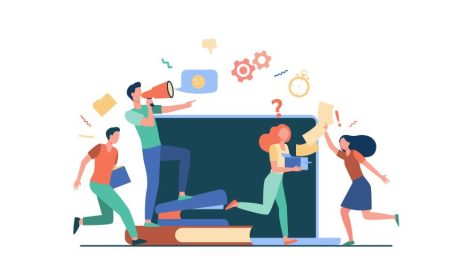

Machines and Manpower: Redefining Human Resources in the Digital Age
- trienkhaiweb
- 25 February, 2024
- 0 Comments
The relentless march of technology is fundamentally reshaping the workplace. As machines and automation penetrate deeper into various industries, a critical question lingers: What is the future of human resources when machines can replicate so many tasks? How can HR departments and businesses harness the strengths of both humans and machines to drive success and create a future-ready workforce?
The Manpower Equation: Understanding Machine Capabilities
Research suggests that machines and intelligent automation are poised to displace a significant percentage of jobs currently performed by humans. While the precise number of jobs at risk can be debated, the trend is undeniable. This begs the question – what unique value will humans bring to the workforce of the future, and how should companies reshape their manpower strategies?
Machines vs. Manpower – The Human Advantage
Success in this transforming landscape lies in understanding the fundamental strengths that differentiate humans from machines. Traits such as creativity, complex problem-solving, emotional intelligence (EQ), social skills, and adaptability are where humans will continue to hold a critical edge. Manpower development in the future will prioritize nurturing and developing these qualities.

Adapting Manpower Strategies: The New Focus
HR departments must play a pivotal role in ensuring their organizations are equipped to not only survive but thrive in this changing landscape. Here are key areas to address:
- Identifying future-proof skills: Analyze industry trends, emerging technologies, and the core needs of the business to identify the skills and attributes of highest importance. Foster training and manpower development programs that promote these skills.
- Re-imagining work: Explore how tasks can be redesigned to leverage both machine capabilities and human strengths. Automation can handle repetitive and data-heavy aspects, freeing up manpower to focus on strategic thinking, innovation, and client relationship building.
- Fostering a Learning Culture: Cultivate a mindset of continuous learning and adaptability throughout the workforce. Invest in programs that support reskilling and upskilling of manpower, preparing them for evolving job requirements.
Obstacles and Strategies
This transformation won’t be without challenges. Here are some common hurdles to anticipate and ways to overcome them:
- Resistance to change: Fear and uncertainty are natural reactions to large-scale change. Proactive communication, transparent leadership, and support for manpower during transitions will be critical to maintaining morale and productivity.
- Reworking the workplace environment: Companies should create workspaces that foster collaboration, innovation, and employee well-being. Manpower will perform best when empowered with the right environment, tools and support.

The Evolving Role of HR
The role of the human resources department must evolve in tandem with these broader workforce trends. Key responsibilities for HR will include:
- Strategic Workforce Planning: Partnering with business leaders to analyze manpower needs and project future skill requirements.
- Talent Development: Designing and implementing training programs that prioritize the development of essential skills while supporting employee growth.
- Championing Change: Actively influencing the company culture to encourage adaptability, innovation, and acceptance of technology’s role in the workplace.
Conclusion
The rise of machines will certainly reshape the workforce, but it should not be seen as a threat to manpower. This is an opportunity for human potential to reach new heights. Companies that embrace this evolution, invest in the development of their manpower, and leverage the strengths of both humans and technology will be best positioned to thrive in the digital age.
Related articles
Attracting Top Talent in Vietnam’s Competitive Job Market: A Guide for Employers
The Vietnamese job market is dynamic and increasingly competitive. As we head into 2025, skilled professionals are in high demand, and companies are vying for their attention. It’s no longer enough to simply offer a good salary; today’s employees are looking for a comprehensive package that includes benefits, work-life balance, and a positive company culture….
Attracting, Retaining, and Growing Top Talent in Vietnam’s Competitive Market
In today’s rapidly evolving business landscape, securing and retaining top talent is more crucial than ever. For businesses operating in Vietnam, the competition for skilled manpower is fierce. Quinn Vietnam Manpower understands these challenges and offers comprehensive solutions to help your organization attract, retain, and grow the talent you need to thrive in 2025. Understanding…
Avoid These 8 Recruitment Marketing Mistakes
The competition for top talent is fierce in 2025. To attract the best candidates for your organization, you need a strong recruitment marketing strategy. Simply posting a bland job description and hoping for the best won’t cut it. You need to actively engage with potential candidates, build your employer brand, and utilize the latest digital…
Battling Communication Overload: Strategies for Success
In today’s hyper-connected world, communication overload is a growing concern for businesses of all sizes. The constant influx of emails, messages, and notifications can overwhelm employees, hindering productivity and stifling innovation. This is particularly relevant in the dynamic landscape of Vietnam, where businesses are rapidly expanding and the demand for skilled manpower is on the…
Beyond Monthly Meetings: A Guide to Effective Team Communication
While meetings are essential for team collaboration and communication, relying solely on monthly gatherings can be detrimental to productivity, corporate culture, and manpower efficiency. Quinn Vietnam Manpower recognizes the limitations of infrequent meetings and offers insights into more effective communication strategies for 2025. Why Monthly Meetings Aren’t Enough Information Overload and Diminished Engagement: Monthly meetings…
Boost Your Website’s Performance with The Guide to Broken Link Checkers
In the ever-evolving digital landscape of 2025, maintaining a robust online presence is crucial for businesses, especially those in the competitive manpower industry. For Quinn Vietnam Manpower, ensuring your website is optimized for search engines is paramount to attracting potential clients and top-tier talent. One often overlooked aspect of SEO is the detrimental impact of…







